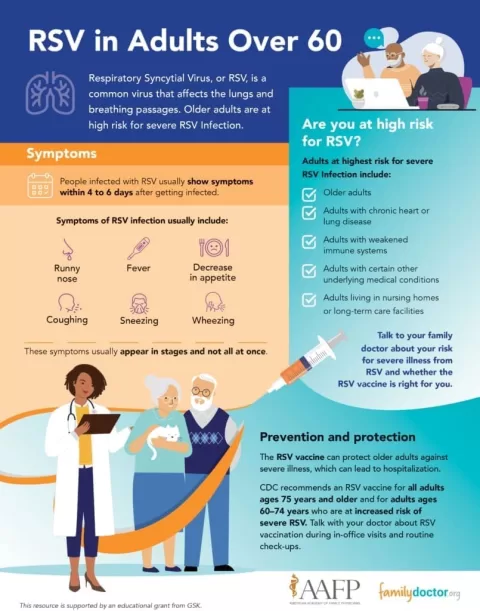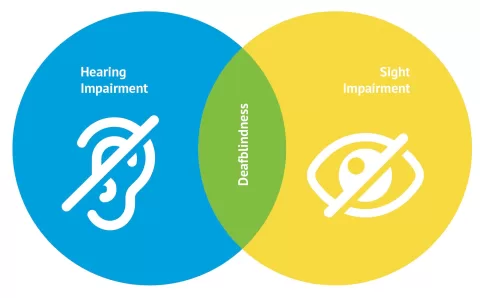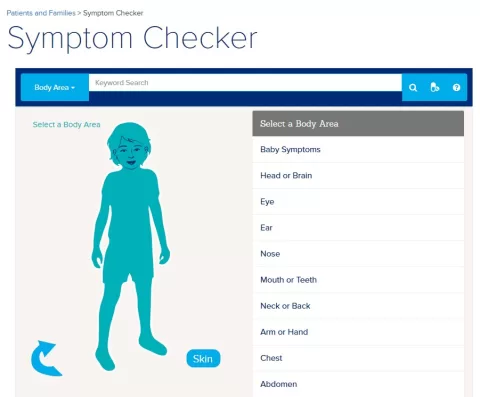COVID-19 symptom tracking is a critical tool in the ongoing battle against the pandemic, enabling researchers to monitor and analyze the disease’s impact on public health. At UC Riverside, computer scientists are harnessing the power of Google Trends analysis to identify symptoms unique to COVID-19, such as ageusia and anosmia, through innovative algorithms. This unique approach not only enhances our understanding of COVID-19 symptoms but also aids in misinformation detection, helping to combat false narratives circulating on social media. By employing these new public health tools, epidemiological research can gain a clearer picture of how symptoms are being discussed and searched online. As scientists continue to refine these methodologies, the hope is that such efforts will empower health experts to respond more effectively to emerging health crises.
The method of tracking symptoms related to COVID-19 presents a revolutionary way to collect health data through digital means. By utilizing techniques such as Google Trends analysis, researchers can tap into real-time insights regarding public health concerns and symptom prevalence. This approach illuminates the distinction between COVID-19 and other respiratory illnesses, which is vital for targeted epidemiological research. Additionally, enhancing misinformation detection allows for a more informed public, reducing the spread of false information linked to the disease. As the field advances, these developments pave the way for innovative public health strategies that prioritize accuracy and awareness.
Tracking COVID-19 Symptoms Using Advanced Algorithms
Researchers at UC Riverside have developed innovative algorithms that leverage Google Trends data to identify unique COVID-19 symptoms. This cutting-edge study, led by Vagelis Papalexakis and Jia Chen, distinguishes three primary symptoms associated with COVID-19—ageusia, shortness of breath, and anosmia—from other respiratory illnesses such as the flu. By analyzing search data from 2019 and 2020, the team utilized a refined technique known as nonnegative discriminative analysis (DNA) to isolate symptoms unique to the COVID-19 dataset. This work illustrates how historical search trends can be instrumental in understanding the evolving landscape of COVID-19, ultimately aiding public health specialists in monitoring and managing outbreaks effectively.
The researchers believe that the integration of Google Trends as a proxy can replace or complement traditional hospital data, which is often not publicly accessible. While Google Trends data is notoriously noisy, it reflects public interest and concern about specific symptoms potentially leading to COVID-19 diagnoses. As Papalexakis highlighted, symptom searches might indicate both actual experiences and an interest in learning more about COVID-19—a valuable insight for epidemiologists. Therefore, this algorithmic approach represents a significant leap forward in symptom tracking, offering a timely resource for those involved in public health and epidemiological research during the pandemic.
Leveraging Google Trends for Epidemiological Research
In their study, the researchers have successfully applied Google Trends to improve epidemiological research regarding COVID-19. By exploring symptom searches during the onset of the pandemic, they provided a remarkable way of uncovering new insights without relying solely on clinical data. Traditionally, researchers have utilized Google Trends to forecast flu patterns, but the UC Riverside team’s innovative strategy marks a pivot toward COVID-19 analytics. The distinction made possible by their algorithm is particularly useful in generating data that may guide public health interventions, as patterns in symptom searches can reflect real-world health trends among populations.
Moreover, understanding the specifics of symptom-related search behavior can empower public health officials to target their messaging and resources more effectively. For instance, as certain symptoms become more prevalent in search data, health authorities can initiate campaigns that educate the public about those symptoms, leading to earlier testing and isolation of cases. This makes Google Trends a potent public health tool, particularly in the face of rapidly evolving health crises where immediate data collection may be hindered.
Evolving Tools for Misinformation Detection in Public Health
Amid the COVID-19 pandemic, misinformation has proliferated through social media platforms, presenting a significant challenge for public health officials. Addressing this issue, UC Riverside researchers led by Papalexakis and doctoral student William Shiao have developed a sophisticated tool specifically designed to identify and flag misinformation regarding COVID-19. Utilizing a dataset comprising 90,000 academic articles alongside 20,000 articles rife with misinformation, their model employs a similarity matrix-based embedding method known as KI 2 TE. This method effectively correlates misinformation with credible sources, offering a robust strategy for public health messaging.
The intention behind this misinformation detection tool is not merely to censor false information but to create an informative approach that educates the public. As Papalexakis stated, the tool aims to provide clarity by revealing the scientific sources underpinning the flagged misinformation. This educational aspect is crucial as it encourages critical evaluation of the information shared online, fostering a better-informed public capable of distinguishing between credible and questionable health claims. This approach could revolutionize how misinformation is tackled in public health contexts, laying the groundwork for future developments in digital health communications.
The Role of COVID-19 Algorithms in Healthcare
The algorithms developed by researchers at UC Riverside signify a transformative role of technology in healthcare, especially during pandemics like COVID-19. By employing advanced computational methods to analyze symptom data and misinformation, these algorithms encourage a proactive stance in managing public health crises. The ability to discern unique COVID-19 symptoms from general respiratory ailments enhances diagnostic accuracy and informs health response strategies. Specifically, by focusing on terms that are differentially searched in the context of COVID-19, the research outputs are particularly relevant to healthcare providers striving to respond effectively to patient needs.
Moreover, the implications of these algorithms extend beyond immediate usage: they set a foundational precedent for future research in disease surveillance and monitoring. By illustrating how digital footprints can be harnessed to enhance epidemiological insights, these studies encourage the integration of artificial intelligence and big data analytics into mainstream public health practices. This synergy not only optimizes resources but also empowers healthcare systems to adapt to fast-evolving health threats, ensuring timely and appropriate responses to emerging crises.
Understanding Misinformation Through AI-Driven Research
The intersection of AI and misinformation detection is critical as society grapples with the dual challenges of a pandemic and the disinformation era. The research conducted by Papalexakis and Shiao highlights the necessity for dynamic tools that can adapt and evolve in response to the ever-changing landscape of information dissemination. By leveraging databases like CORD-19, their system is capable of analyzing content for veracity, effectively demystifying misinformation related to COVID-19. This cutting-edge approach not only seeks to identify what is false but also connects users to scientific articles that can enhance their understanding of the disease.
As misinformation grows rampant in the digital age, AI-driven research becomes indispensable in filtering out harmful content. The insights gained from these efforts can shape educational campaigns and targeted interventions that inform the public, ultimately fostering a more health-literate society. By presenting credible references alongside flagged misinformation, the project seeks to build trust between researchers, health officials, and the public—a crucial step in combating misinformation and safeguarding public health.
The Future of Public Health Tools in the Digital Age
The ongoing research initiatives at UC Riverside focus not only on identifying symptoms and misinformation but also on envisioning the future of public health tools in a digitized world. These developments showcase the growing significance of technology in public health endeavors, where data analytics, machine learning, and AI play pivotal roles. As we navigate through the complexities of COVID-19, such innovations can facilitate real-time monitoring and response systems that are both effective and efficient, ensuring that healthcare providers have access to the latest data to inform their practices.
In light of the increasing reliance on digital health tools, the collaboration between computer scientists and public health experts becomes increasingly vital. This interdisciplinary approach ensures that the tools developed are not only technologically sound but also contextually relevant to real-world public health challenges. Moving forward, continued investment in these future-oriented public health tools is crucial, as they may prove indispensable in managing not just COVID-19, but various health crises that loom in the years to come.
Interdisciplinary Collaboration in COVID-19 Research
The success of the ongoing projects associated with tracking COVID-19 symptoms and misinformation detection illustrates the importance of interdisciplinary collaboration in addressing complex public health issues. By integrating knowledge from computer science, epidemiology, and public health, researchers can create comprehensive tools that provide actionable insights. UC Riverside’s team, comprising both faculty and graduate students, has demonstrated how teamwork across different academic domains can yield innovative solutions to urgent challenges presented by the pandemic.
Such collaborations are pivotal not only in research but also in the implementation of findings in practical scenarios. For instance, the algorithms developed for symptom tracking could potentially be adapted by health departments for real-time response strategies, while the misinformation detection tool can serve as a model for future digital literacy initiatives. Witnessing the convergence of diverse expertise emphasizes the necessity of breaking down traditional silos in academia to enhance public health outcomes effectively.
Empowering Communities Through Health Literacy
One of the critical outcomes of research focused on COVID-19 symptoms and misinformation detection is the emphasis on health literacy within communities. Increasing public understanding of COVID-19 symptoms and the importance of accurate health information can empower individuals to make informed decisions regarding their health. By incorporating educational elements into the algorithmic tools being developed, researchers aim to bridge gaps in knowledge that may exist in various populations, particularly those less familiar with digital health resources.
Ultimately, enhancing health literacy not only supports individual health management but also contributes to collective well-being, as a better-informed public can actively participate in public health strategies. Educational campaigns that stem from the research can further amplify this effect, equipping citizens with the tools necessary to analyze the information they encounter online. Continuing to prioritize health literacy through interdisciplinary research will play a crucial role in fostering resilient communities capable of navigating future health crises more effectively.
The Impact of COVID-19 Research on Emerging Technologies
Research on COVID-19 has catalyzed the advancement of emerging technologies in public health sectors worldwide. The algorithms and tools being developed at UC Riverside represent a pivotal moment where healthcare intersects with technological innovation, as teams work diligently to analyze large datasets and extract meaningful insights. These technologies not only enhance the efficacy of symptom tracking and misinformation prevention but also reveal the potential for similar methodologies to be applied to other health concerns.
As the pandemic continues to evolve, the implications of such research extend beyond immediate concerns. The frameworks established through this work can serve as blueprints for future health technology initiatives, encouraging a continuous cycle of innovation within the public health sphere. This persistent engagement with digital health technologies will ensure preparedness for potential pandemics and improve overall healthcare delivery by fostering a proactive rather than reactive approach.
Frequently Asked Questions
What is COVID-19 symptom tracking and why is it important?
COVID-19 symptom tracking refers to the monitoring and analysis of symptoms that individuals experience related to the virus, leveraging tools like Google Trends analysis. This tracking is critical for public health tools and epidemiological research to detect and respond to outbreaks, identify unique symptoms, and understand public interest in COVID-19 symptoms.
How do COVID-19 algorithms help with symptom identification?
COVID-19 algorithms, such as those developed by researchers using Google Trends data, help identify symptoms unique to COVID-19, like ageusia and anosmia. By comparing symptom searches over time, these algorithms assist epidemiologists in distinguishing COVID-19 symptoms from those of other respiratory illnesses, effectively enhancing symptom tracking.
What role does Google Trends analysis play in COVID-19 symptom tracking?
Google Trends analysis is a vital method in COVID-19 symptom tracking, allowing researchers to observe search behaviors related to COVID-19 symptoms. This data provides insights into public interest and potential symptom experiences, which can guide public health responses and inform epidemiological research.
How does misinformation detection relate to COVID-19 symptom tracking?
Misinformation detection is connected to COVID-19 symptom tracking as it helps ensure that the public receives accurate information about symptoms and the virus. By flagging false information and providing scientific sources, tools developed by researchers contribute to better understanding of COVID-19 symptoms and reduce the spread of misinformation.
Can COVID-19 symptom tracking tools help in future epidemics?
Yes, tools developed for COVID-19 symptom tracking can be valuable for future epidemics. The algorithms and methodologies from these projects can be adapted for other diseases, helping scientists quickly identify symptoms and understand public reactions, which is essential for timely public health interventions.
What unique symptoms did the research identify for COVID-19 compared to flu?
The research identified three unique symptoms for COVID-19: ageusia (loss of taste), anosmia (loss of smell), and shortness of breath. This discovery was made using COVID-19 algorithms that analyzed search data, enhancing understanding of symptom tracking effectiveness during the pandemic.
How does the algorithm developed by UC Riverside enhance public health tools?
The algorithm developed by UC Riverside enhances public health tools by utilizing Google Trends data to discover and analyze unique COVID-19 symptoms. This approach helps researchers track symptom trends and improve response strategies, acting as a proxy when hospital data is unavailable.
What is the significance of the research presented at epiDAMIK 2021 relating to COVID-19 symptom tracking?
The significance of the research presented at epiDAMIK 2021 lies in its innovative approach to COVID-19 symptom tracking using discriminative knowledge discovery from Google Trends data. The findings provide a framework for accurate symptom identification, which is essential for effective public health response and epidemiological studies.
How can symptom tracking influence public awareness about COVID-19?
Symptom tracking can greatly influence public awareness about COVID-19 by providing real-time insights into what symptoms are most concerning to the public. By analyzing search trends, public health authorities can better communicate health risks and guide the public in recognizing potential COVID-19 symptoms.
What impact does the development of misinformation detection tools have on public health?
The development of misinformation detection tools has a profound impact on public health by addressing false claims about COVID-19. By educating the public with verified information and scientific evidence, these tools help to counter misinformation, ultimately supporting better health decisions among the population.
| Key Point | Details |
|---|---|
| Development of COVID-19 Symptom Tracking Tools | UC Riverside scientists are creating tools to monitor COVID-19 symptoms and identify misinformation on social media. |
| Algorithm for Symptom Identification | Led by Vagelis Papalexakis and Jia Chen, the algorithm identifies unique COVID-19 symptoms: ageusia, shortness of breath, and anosmia. |
| Data Source Used | Google Trends data was analyzed for differences in symptom searches between 2019 and 2020. |
| Methodology | The researchers utilized nonnegative discriminative analysis (DNA) to extract COVID-specific symptoms. |
| Application for Public Health | The tools aim to help public health experts monitor COVID-19 trends using symptom searches as proxies for hospital data. |
| Misinformation Detection Tool | A separate tool is being developed to identify and explain COVID-19 misinformation using a similarity matrix methodology. |
| Research Publications | Two papers on the research were presented at relevant workshops in the field of data mining and epidemiology. |
Summary
COVID-19 symptom tracking is an essential tool in managing public health during the pandemic. Researchers at UC Riverside are at the forefront of developing innovative methods to track and monitor COVID-19 symptoms while also combating misinformation about the virus. By utilizing Google Trends data, they have successfully identified key symptoms that distinguish COVID-19 from the flu. This groundbreaking work not only aids in understanding symptom patterns but also supports epidemiologists in analyzing the ongoing impact of the virus. Moreover, the development of a misinformation detection tool serves as a critical step towards ensuring reliable information is accessible to the public.
The content provided on this blog (e.g., symptom descriptions, health tips, or general advice) is for informational purposes only and is not a substitute for professional medical advice, diagnosis, or treatment. Always seek the guidance of your physician or other qualified healthcare provider with any questions you may have regarding a medical condition. Never disregard professional medical advice or delay seeking it because of something you have read on this website. If you believe you may have a medical emergency, call your doctor or emergency services immediately. Reliance on any information provided by this blog is solely at your own risk.







